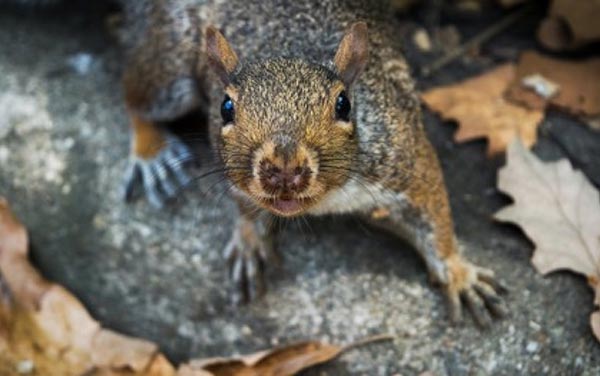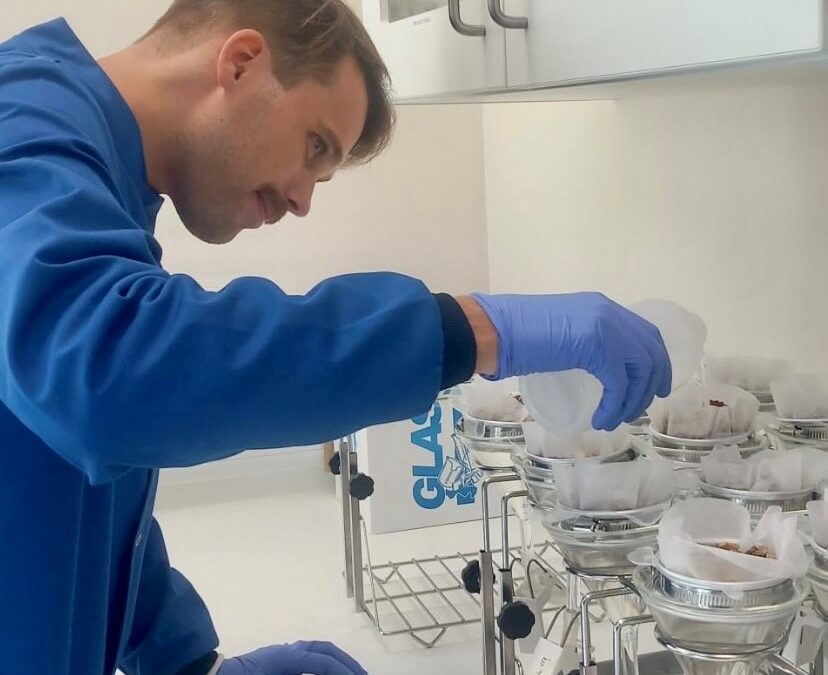Squirrel damage and woodland health
The damage that mammals cause to trees is a serious threat to woodland health. Since the eastern grey squirrel was introduced to Britain in the late 19th century, they have caused extensive damage to trees through their bark-stripping behaviour. Grey squirrels peel the outer bark off of broadleaf trees, exposing the underlying bark tissue layers. This disrupts the flow of nutrients from the roots to the canopy of the tree, resulting in structural deformities, decay, and eventual death of the tree.
Why do grey squirrels bark-strip?
TLDR: We don’t know!
There are many views about why squirrels bark-strip. Nutritional deficiencies, the sugary goodness of inner bark, collecting nest material, and stress are just some of the theories proposed. However, there is no strong evidence for any of them. Squirrels are often hanging out in the canopy of the forest, which means it is really difficult to observe them actually bark-stripping, making it almost impossible to come to any conclusion on what drives the behaviour.
Despite this, we can still develop methods to prevent the behaviour by understanding what makes certain trees particularly delicious, and what makes others taste bad. This is the main purpose of my PhD research. If we can learn more about what squirrels find tasty, we can use this to make decisions about which tree species to plant to avoid squirrel damage.
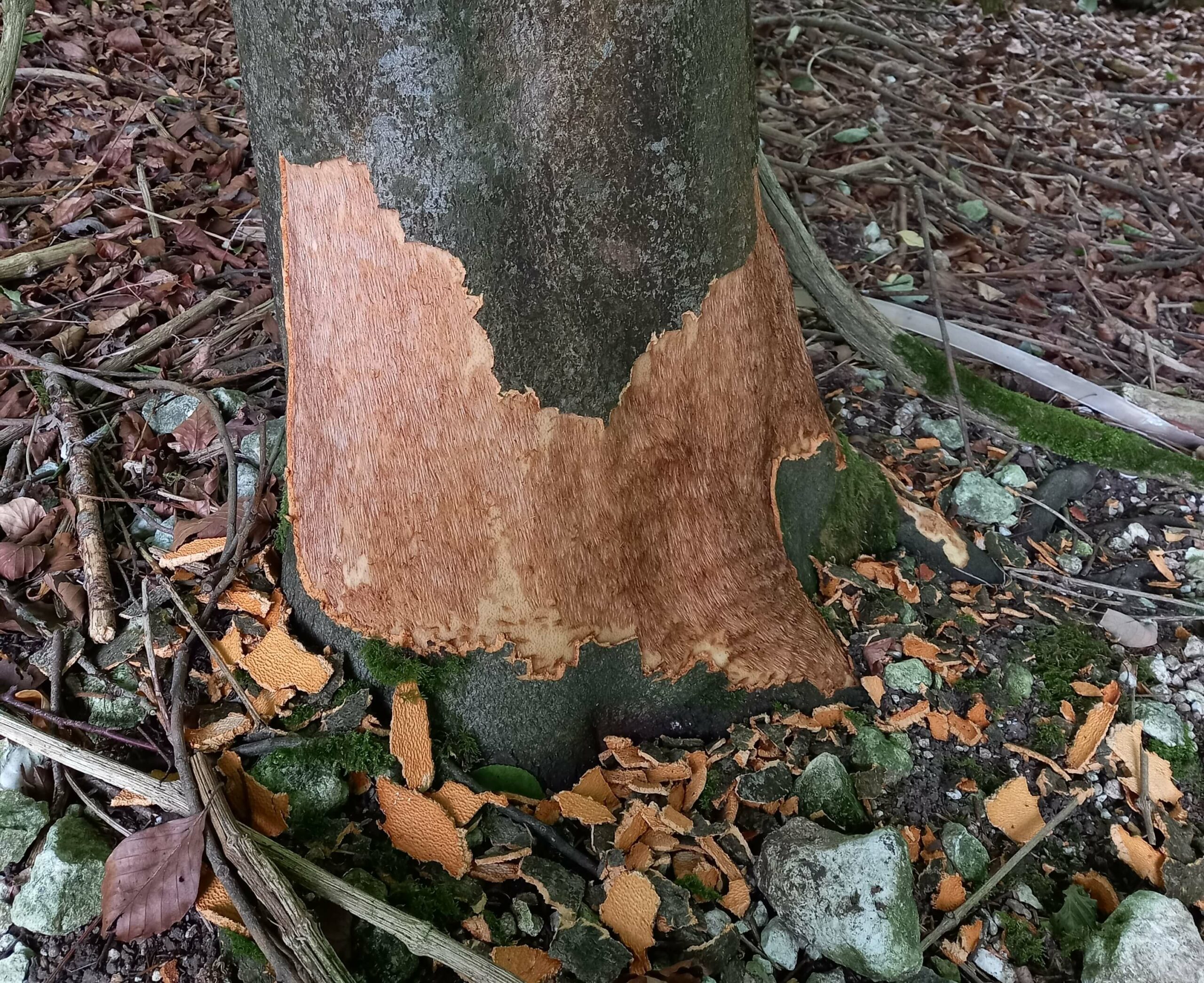
Bark-stripping at the base of a beech tree. Grey squirrels do not consume the outer bark, but scrape their teeth or lick the underlying tissue, leaving outer bark chippings at the base of the tree.
The challenges of working in the field
We deployed a number of bait stations (tables that we bait with food for squirrels) throughout a few woodlands to conduct feeding choice trials in the field. The aim is to find out what types of food squirrels prefer by offering choices of different ‘flavours’ of bait . These pilot studies mainly helped us to determine the ideal bait type to use, methods to deliver the bait to squirrels, and create ways to avoid the bait being consumed by non-target species (deer, badger, birds and small mammals). Originally, our bait stations were constructed to look like the one in the picture below, but we soon found out that these required many modifications to reach an optimal design.
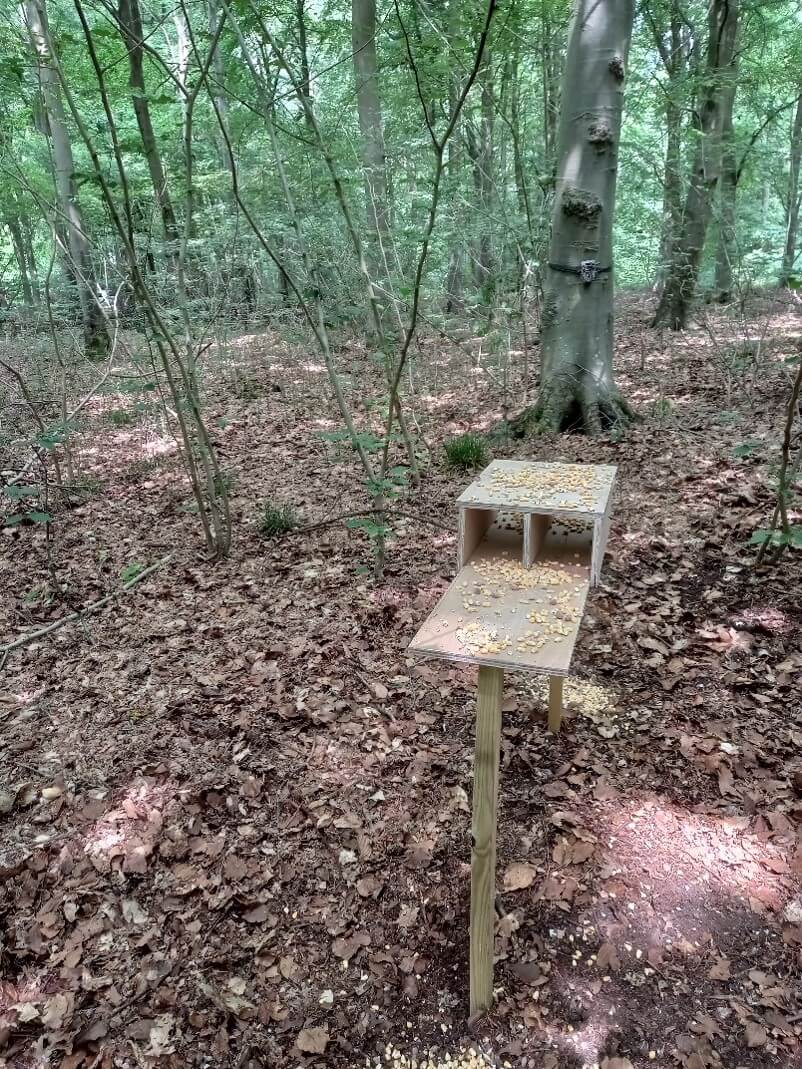
The original bait stations before many modifications
Unexpected Visitors
We had constructed our feeding stations to be about one meter off the ground, to prevent badgers from feeding from them. This obviously didn’t work, as you can see in the video below! Badgers located a third of all our initial feeding stations and they were being particularly greedy. With hindsight, we realised it was a mistake to use peanuts, which is a favoured food of the badger.
In the planning stages, we hadn’t thought about the need to place feeders well away from badger feeding and commuting habitats. After figuring out where the badger setts were located within the woodland, we moved all affected bait stations to different areas. We then needed to wait for the squirrels to find the feeders again. Thankfully, we did not see badgers feeding on the bait again. That was one problem fixed!
Choosing the best bait
We were still trialling out many different bait types, and were looking to use a paste instead of whole foods. This would prevent squirrels from caching their food, which is the behaviour when they bury food in the ground, a bit like a store cupboard.
Initially we had tried to develop a maize paste, using soaked whole maize that was boiled briefly and then blended. When we deployed this bait type, the high water content, meant that it turned mouldy within a day out in the field. We don’t want to be feeding the squirrels mouldy food, so we abandoned any idea of using bait with a high water content.
We realised quickly that to make a useable paste that wouldn’t get mouldy, it needed to have a high fat content. Squirrels love fatty foods, they go nuts for it! But, after trialling some pastes high in fats, we decided not to use these as we want them to taste our treatments without the fat content influencing their decision to feed. We eventually decided to go with whole dried maize as our bait, which they generally don’t cache, and easily feed on this bait type in the spring and summer. Problem number two fixed!
Developing the best bait delivery
The last problem was developing a method to deliver the maize to the squirrels. Our method needed to prevent other non-target species from accessing the bait, and it needed to be easy for us to measure.
We trialled many methods. The first included slotting bait trays into the feeding stations, which worked for a while, until the squirrels started stealing them. I started thinking of more inventive ways to deliver the bait to the squirrels, and I eventually looked to repurposing bird feeders to act as squirrel hoppers. Placing the bird feeders within a tunnel seemed to deter birds from feeding, and other mammals were no longer able to access the bait. I had finally found a method that prevented non-target species from feeding on the bait. However, the maize was not easily accessible for the squirrels as it kept getting stuck in the feeder. This understandably made the squirrels very frustrated, and they started to find other ways to get into the feeder, which resulted to them chewing the plastic vessel and ruining the feeders.
Squirrels favourite foods are nuts and seeds, which are not readily available during the summer months. This makes it easier to attract squirrels with supplementary food. By the end of fieldwork season, the hazelnuts were ripening, and the squirrels stopped feeding on the maize I was providing. As a result, problem three was not quite fixed. We’ll have to revisit this one next field season.
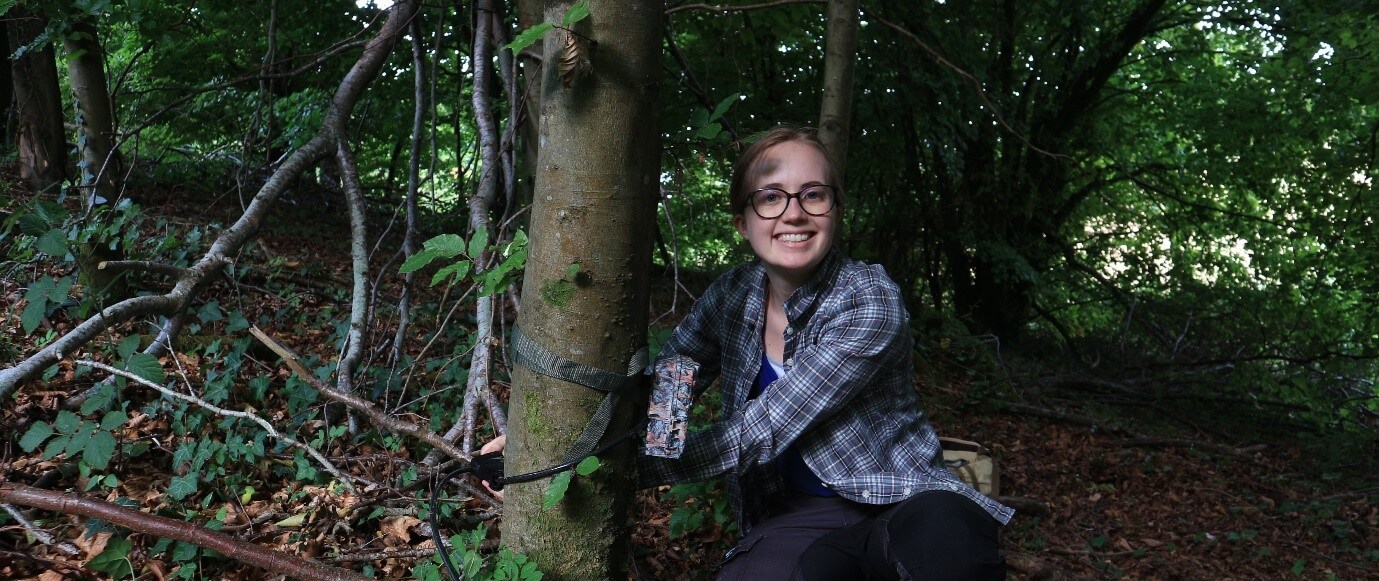
Alexandra putting out a camera trap
What I learnt from a season in the field
After a long season in the field, constant problem solving had left me feeling exhausted. I had to remind myself that we were attempting to design a study that had never been done before, and that it was never going to be perfect on the first try. Working with wildlife is never going to go exactly to plan, and working in the field means you have additional factors like weather, other wildlife, and often, members of the public, to account for. It’s easy to get disheartened when things don’t go to plan, but that’s the nature of science! The biggest lesson I learned for this field season was that you have to fail to succeed, and failing is what helps you learn. Field work is definitely hard work and not for the faint-hearted, but it is extremely rewarding to be able to succeed in the end.
